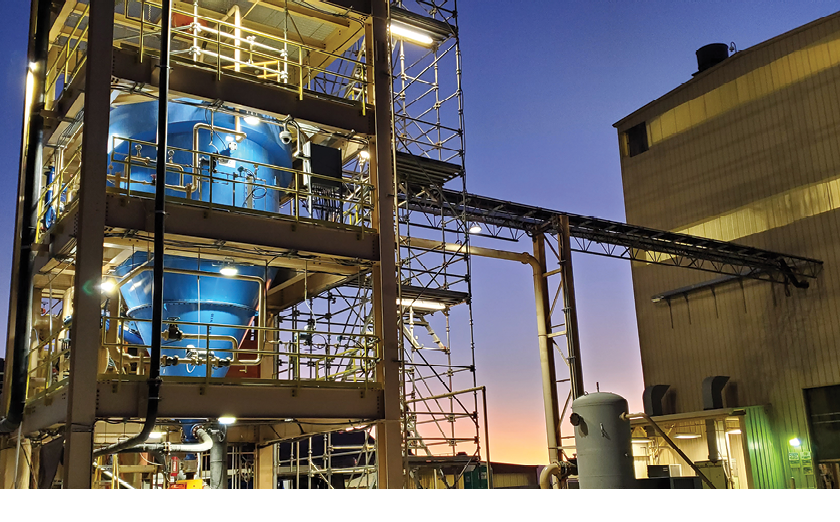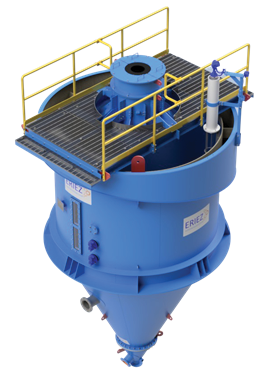The mining industry’s cautious approach to innovation is understandable. With massive capital investments, complex operations, and significant reputational risks, prudence is essential. However, the cost of inaction can often outweigh the perceived risks of change.
by Jaisen Kohmuench, president and CEO, Eriez

As the mining sector faces mounting pressures to improve sustainability, efficiency, and profitability, a shift is underway: forward-thinking companies are proving that calculated innovation unlocks transformative value. At Eriez, we have seen this firsthand.
The roots of risk aversion
Mining’s risk-averse culture is deeply ingrained, shaped by billion-dollar infrastructure commitments and the persistent belief that innovation is risky or prohibitively expensive. This mindset fuels a “race to be second,” where companies hesitate to adopt new technologies until competitors have proven their success. While this approach minimizes immediate risk, it sacrifices long-term opportunities. Those who wait often find themselves struggling to keep up as early adopters leverage cutting-edge solutions to gain a competitive edge.
Yet, the notion that innovation is inherently risky or costly is increasingly outdated. In reality, the cost of maintaining inefficient legacy processes can far exceed the investment required for strategic technological advancements. Companies that embrace well-researched, targeted innovations are not only improving operations but also driving long-term financial and environmental benefits.
Embracing disruption
Over the last decade, the industry has been shifting. Emerging and disruptive technologies such as artificial intelligence, automation, and advanced flotation systems are proving that innovation is not only viable, but essential for the future of mining. Among these breakthroughs is Eriez’ HydroFloat technology, which has redefined what is possible in coarse particle flotation.
Traditional flotation methods have long struggled with particles outside the 15-120-micron range. This limitation leads to significant losses of valuable materials during processing. HydroFloat addresses this challenge with an innovative aerated fluidized-bed design that enhances bubble-particle collision rates, reduced turbulence and eliminated buoyancy restrictions. This approach allows for the recovery of coarse particles up to several millimeters in size a feat once considered unattainable.
The implications are profound: HydroFloat aligns with mining’s dual mandate of increasing operational efficiency while improving sustainability. For instance, it reduces energy consumption by 10–20%, a critical advantage given that mining accounts for approximately 10% of global energy use. Furthermore, it enables safer and more efficient tailings management by producing coarser waste streams. This reduces reliance on traditional tailings dams and mitigates associated environmental risks.
Breaking down barriers
Innovation doesn’t occur in isolation; it thrives on collaboration among academia, industry professionals, and equipment manufacturers. Each stakeholder plays a vital role: universities contribute theoretical rigor and train future problem-solvers; industry professionals identify real-world challenges; and suppliers like Eriez invest in research and development to create practical solutions.
HydroFloat exemplifies this collaborative approach. Developed through partnerships with Virginia Tech and industry leaders such as Newcrest (now Newmont) and Rio Tinto, it demonstrates how shared risk can yield shared rewards. By working together, companies, researchers, and technology providers can create solutions that not only advance individual operations but also propel the entire industry forward.

The economics of boldness
Stagnation carries hidden costs – both financial and environmental. Consider tailings: vast quantities of valuable minerals are often discarded as waste after processing. HydroFloat showed its ability to recover this lost value; in one copper tailings case study, it enabled the recovery of 50% of the copper and 70% of the molybdenum that was being discarded.
These results go beyond operational wins – they represent economic and environmental imperatives. By recovering more valuable minerals from existing resources, mining companies can maximize yield while reducing their environmental footprint. This approach not only improves profitability but also strengthens their social license to operate – an increasingly critical factor for securing regulatory approvals and maintaining public trust.
A call to action
The choice is clear: innovate or fall behind. Mining must abandon its “first to be second” mentality in favor of a proactive, collaborative approach to technology adoption. The benefits of greater efficiency, enhanced sustainability, and improved profitability are far too significant to ignore.
Innovation holds the key to mining’s future success. Companies bold enough to lead this transformation will define the next era of the industry. The opportunity is here; the time to act is now.
